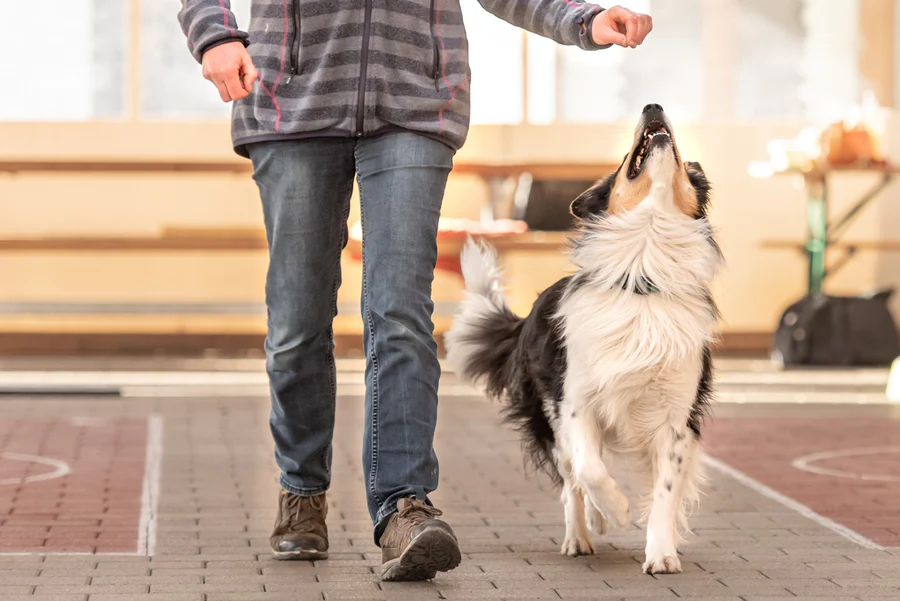
Teaching a dog to heel is an essential skill that every dog owner should aim to achieve. Heeling allows your dog to walk beside you in a calm and controlled manner, making your walks more enjoyable and safer for both you and your furry friend. However, training a dog to heel can be a challenging task, especially for first-time dog owners. But with the right approach and techniques, you can turn this task into a fun and rewarding experience for you and your dog. In this article, we will guide you through teaching your dog to heel.
Paws in Step: Tips for Teaching Your Dog to Heel
The first step to teaching your dog to heel is to understand the concept of heeling. Heeling simply means walking beside your dog with them staying close to your side and matching your pace. Before starting the training, make sure your dog has mastered the basic commands like sit, stay, and come. These commands provide a foundation for heeling training.
When starting the training, make sure to have your dog on a leash. Use a short leash that allows you to have control over your dog’s movements. Begin with having your dog on your left side and give the command “heel.” Make sure to use a firm and clear voice. As you start to walk, keep your dog close to your side and match your pace. If your dog starts to pull or wander, gently pull back on the leash and give the command “heel” again.
Breaking the training into short and frequent sessions is key to success. Heeling is a new concept for your dog, so it will take time for them to fully grasp it. Start with short walks around your neighborhood and gradually increase the duration as your dog improves.
From Pulling to Perfect: Training Your Dog to Heel
One of the most common challenges in teaching a dog to heel is pulling. Dogs have a natural tendency to pull on their leash, either out of excitement or to explore. To overcome this, you can use the “stop and go” technique. When your dog starts to pull, stop walking and wait until your dog comes back to your side. Once they do, continue walking. This teaches your dog that pulling will only delay the walk.
Using positive reinforcement is crucial in heeling training. Whenever your dog follows the heel command, praise and reward them with treats. This will encourage your dog to repeat the behavior. It’s important to note that treats should be given intermittently, rather than every time, to prevent your dog from becoming dependent on them.
Walking in Sync: The Joy of a Well-Trained Heeling Dog
Once your dog has mastered the basic heeling command, it’s time to take it up a notch. Start incorporating turns and changes in pace into your training. This will teach your dog to pay attention to your movements and follow your lead. You can also add distractions to the training, like other dogs or people, to teach your dog to stay focused on you.
As your dog becomes more comfortable with healing, you can gradually start to lengthen the leash. This will give your dog more freedom to move, but they should still stay close to your side. It’s essential to remain patient and consistent throughout the training, as it may take weeks or even months for your dog to master heeling fully.
Heel Yeah! Fun and Effective Methods for Teaching Your Dog to Heel
Training should be a fun and positive experience for both you and your dog. Instead of using punishment or force, try to make the training sessions enjoyable for your dog. Use toys and games to make heeling more exciting for your dog. You can also train your dog with a partner or in a group setting, which can make the training more stimulating and help your dog socialize.
Remember to always end the training sessions on a positive note. If your dog is not getting the hang of heeling, don’t get frustrated. Instead, end the session and try again later. Your dog will pick up on your emotions, so it’s essential to stay calm and patient.
Step by Step: A Cheerful Approach to Teaching Your Dog to Heel
Teaching your dog to heel takes time and effort, but the results are well worth it. A well-trained heeling dog can make your walks more enjoyable, and it also strengthens the bond between you and your dog. By following the tips mentioned above and having a cheerful attitude, you can make the training process more fun and rewarding for both you and your furry friend.
As a dog owner, it’s your responsibility to ensure your dog is well-behaved in public, and heelingis a crucial aspect of that. You can successfully teach your dog to heel with patience, consistency, and a positive attitude. Remember to always reward your dog’s progress and to have fun along the way. Happy training!